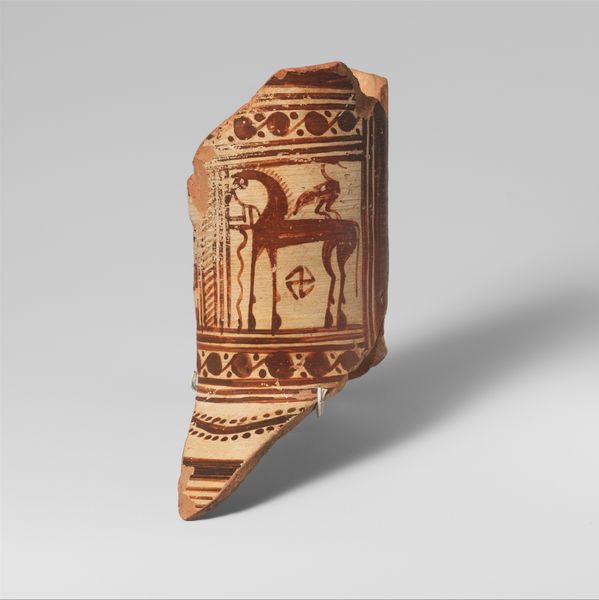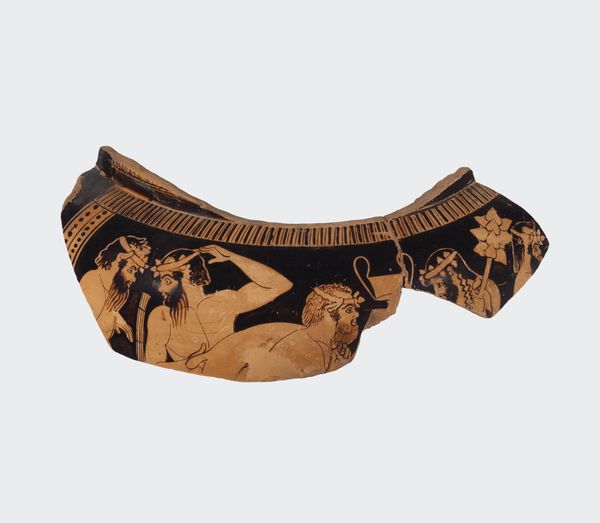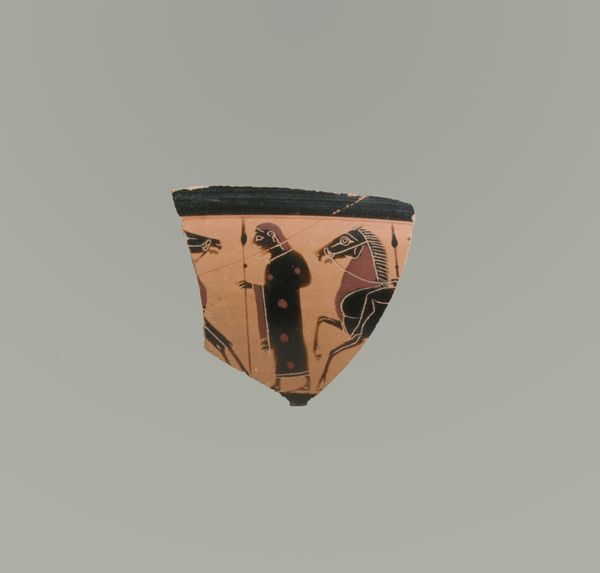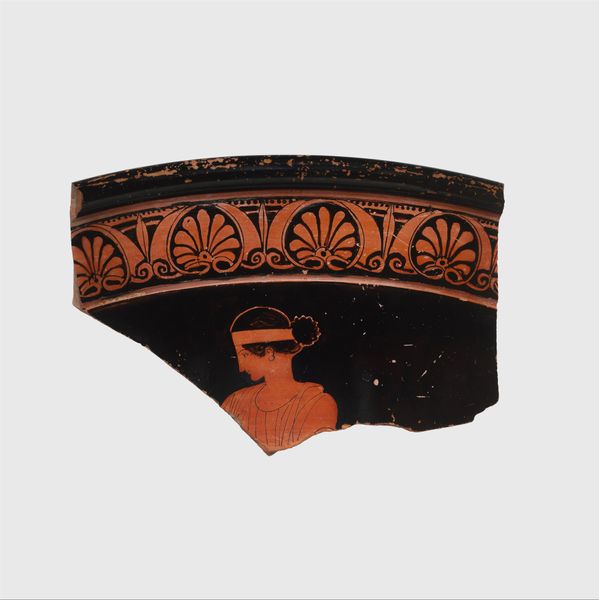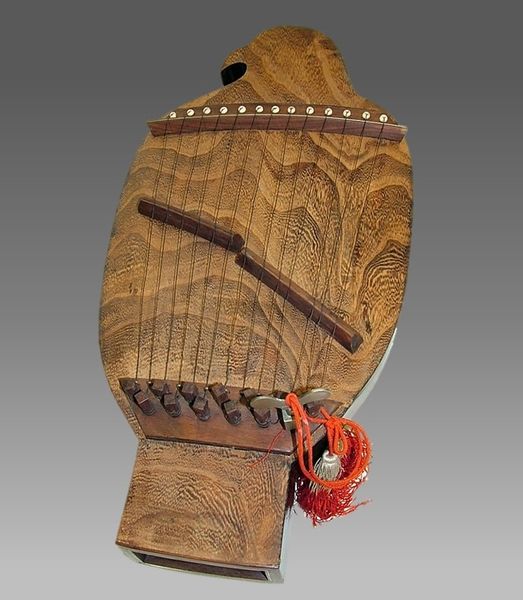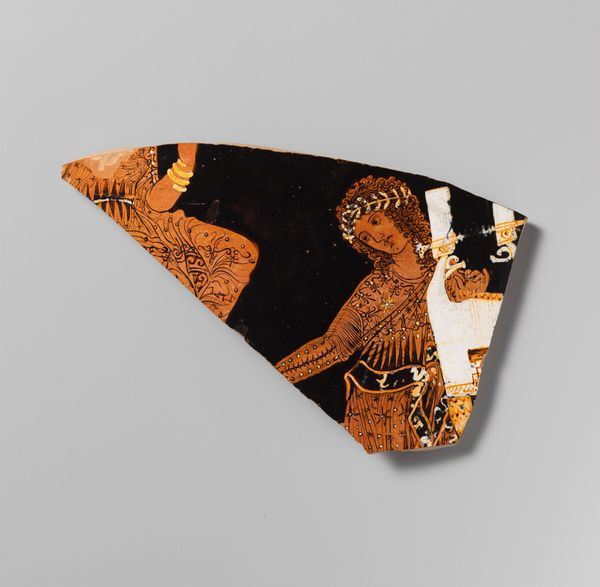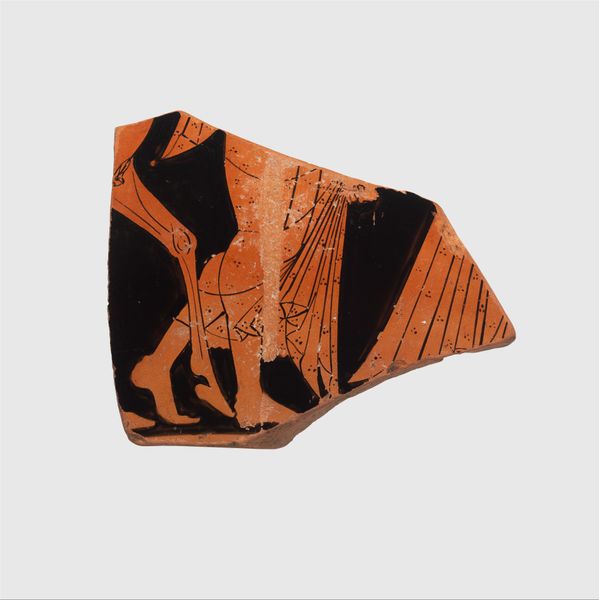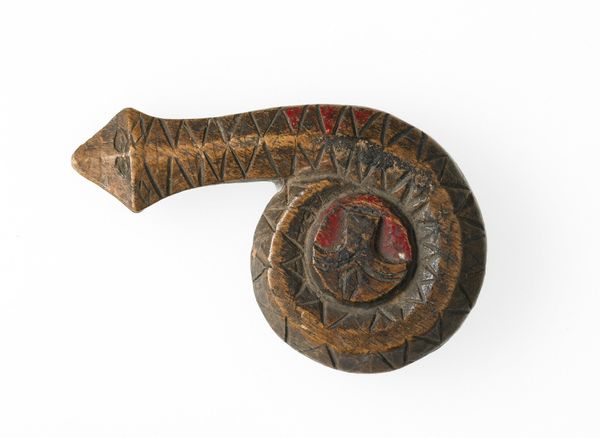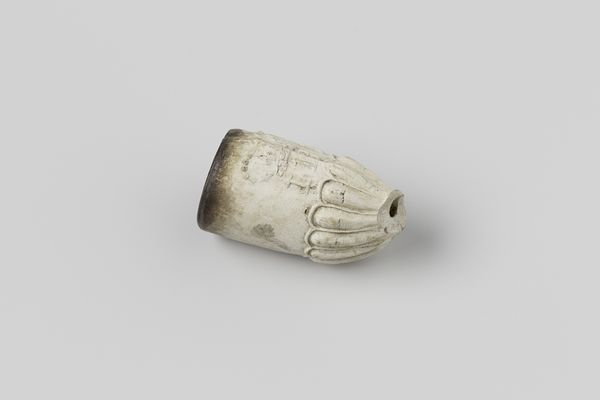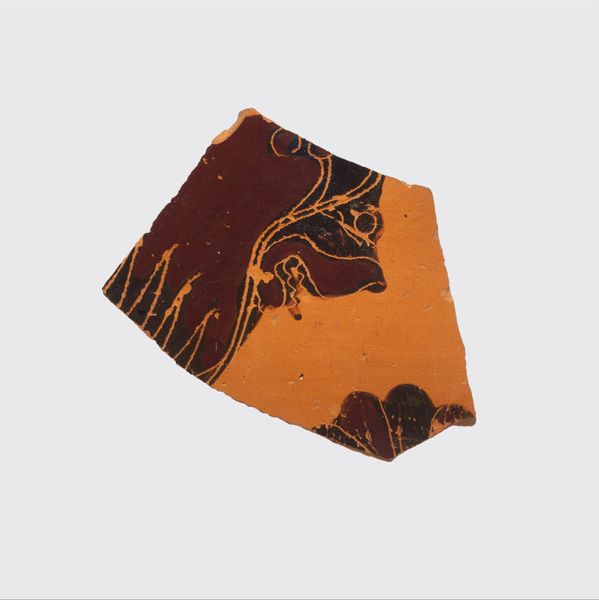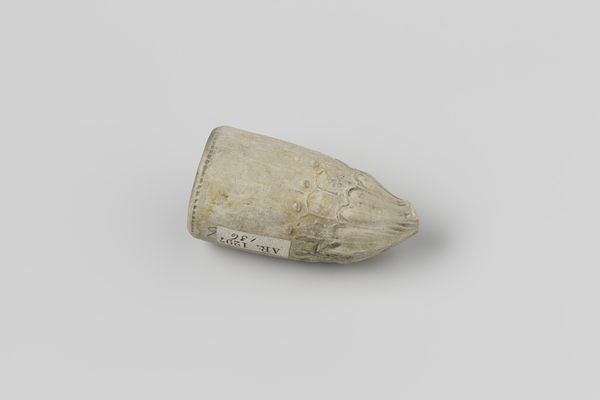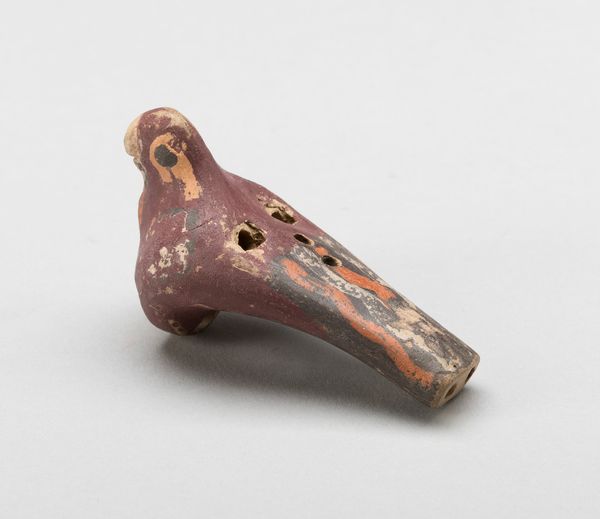
Fragment of a terracotta krater or dinos (bowl for mixing wine and water) 570 BC
0:00
0:00
drawing, ceramic, sculpture
#
drawing
#
sculpture
#
greek-and-roman-art
#
ceramic
#
vase
#
figuration
#
roman-art
#
ancient-mediterranean
#
sculpture
Dimensions: length 2 7/8 in. (7.3 cm)
Copyright: Public Domain
Editor: This terracotta fragment, dating back to 570 BC, once formed part of a krater, a bowl for mixing wine and water. Sophilos is believed to be the artist. It's fascinating how such a small piece can still feel so evocative. What stories do you think it holds? Curator: What grabs me is how this seemingly simple fragment serves as a potent reminder of cultural memory. It’s just a piece, but loaded with symbolism from its era. Look at the figure; possibly a satyr or someone in revelry? The repetition of forms along the top edge creates a kind of rhythmic visual language. It speaks volumes about ancient Greek visual culture, doesn't it? Do you recognize other forms or figures? Editor: I see some markings; are those figures or just decorative elements? Curator: They could be letters, perhaps even part of a signature, but that matters less to me than understanding how such forms became instantly recognizable to people living then. They would have decoded it effortlessly based on cultural familiarity, sort of like we instantly recognize brands today. It shows how deeply ingrained imagery is in shaping cultural identity, and communicating beliefs and narratives. The continuous lines and forms… the iconography served a specific social and even psychological function. Editor: So it’s not just about the image itself, but what the image meant to the people who created and viewed it? Curator: Exactly! What stories did these images evoke? What rituals or beliefs did they reinforce? Fragments like these aren't just broken pieces; they are keys to unlocking a shared past. The vessel had purpose beyond containment – it shaped communal experiences and identity. We are still looking for fragments, putting together stories, isn’t it? Editor: That’s so interesting. It changes how I see not just this piece, but all art from the past. Thanks for illuminating the cultural significance embedded in the symbols.
Comments
No comments
Be the first to comment and join the conversation on the ultimate creative platform.
